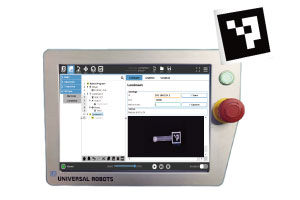Top 3 Ways To Optimize
Logistics Operations With AI
In the modern business landscape, logistics companies encounter various obstacles that hinder their efficiency, hamper customer satisfaction, and make it difficult to keep up with shifting consumer demands. Fortunately, Artificial Intelligence (AI) can help overcome these hurdles by optimizing the logistics sorting process. AI technology can facilitate logistics companies in streamlining their sorting procedures, enhancing accuracy, and reducing costs. In this article, we will explore three valuable tips to help logistics companies optimize their sorting processes with the help of AI.
1: Use Machine Learning Algorithms
Using machine learning algorithms is an effective way for logistics companies to optimize their sorting processes. By analyzing past data, machine learning algorithms can help identify patterns and trends that can improve the efficiency of the sorting process. These algorithms can assist in identifying the most efficient routes for shipments, optimizing the picking and placement of items within the sorting process, and ultimately reducing delivery times.
By leveraging machine learning, logistics companies can continuously improve their processes based on real-time data, resulting in cost savings and increased customer satisfaction.
By leveraging machine learning, logistics companies can continuously improve their processes based on real-time data, resulting in cost savings and increased customer satisfaction.
2: Incorporate Robotics Technology
Logistics companies can greatly benefit from incorporating robotics technology in their sorting processes. Robotics technology can automate many of the manual tasks involved in sorting, packing, and labeling, thereby reducing the risk of errors and increasing the speed and accuracy of the sorting processes.
Using robots in sorting processes can also improve the safety of workers, as robots can handle heavy items and perform repetitive tasks that may risk injury to human workers. Additionally, robots can work continuously without interruption, leading to increased productivity and throughput.
Logistics companies can also benefit from the ability of robots to work collaboratively with humans, leading to a more efficient and streamlined sorting process. Robotic technology can be integrated with existing systems and equipment to provide a seamless logistics system.
Using robots in sorting processes can also improve the safety of workers, as robots can handle heavy items and perform repetitive tasks that may risk injury to human workers. Additionally, robots can work continuously without interruption, leading to increased productivity and throughput.
Logistics companies can also benefit from the ability of robots to work collaboratively with humans, leading to a more efficient and streamlined sorting process. Robotic technology can be integrated with existing systems and equipment to provide a seamless logistics system.
3: Implement Predictive Analytics
Predictive analytics can be an effective tool for logistics companies to optimize their sorting processes. By analyzing data and using machine learning techniques, predictive analytics can help companies predict demand and optimize their inventory levels, reducing the risk of stockouts and overstocks. This technology can also help companies forecast future trends in demand and identify potential bottlenecks in the supply chain. With this information, logistics companies can take proactive steps to reduce delays and improve overall efficiency.
Implementing predictive analytics can also help companies identify areas where they can make improvements in their processes, ultimately leading to a more streamlined and efficient logistics operation. By using AI to incorporate predictive analytics into their logistics processes, companies can stay ahead of the competition and meet the ever-changing demands of their customers.
Implementing predictive analytics can also help companies identify areas where they can make improvements in their processes, ultimately leading to a more streamlined and efficient logistics operation. By using AI to incorporate predictive analytics into their logistics processes, companies can stay ahead of the competition and meet the ever-changing demands of their customers.
Conclusion
AI is revolutionizing the logistics industry by providing new ways for companies to optimize their sorting processes, manage operations more efficiently, and meet evolving customer demands. As discussed in this article, logistics companies can leverage AI through the use of machine learning algorithms, robotics technology, and predictive analytics. By implementing AI-powered solutions, logistics companies can streamline their sorting processes, increase accuracy, and reduce costs, ultimately leading to improved customer satisfaction.
The benefits of AI in the logistics industry are clear, and companies that embrace this technology will be better positioned to succeed in today’s fast-paced and competitive market.
The benefits of AI in the logistics industry are clear, and companies that embrace this technology will be better positioned to succeed in today’s fast-paced and competitive market.
AI in Logistics FAQs
What is the role of AI in logistics?
AI plays a critical role in optimizing logistics processes by automating tasks, analyzing data to identify trends and patterns, and predicting future outcomes.
How does AI help logistics companies increase efficiency?
AI helps logistics companies increase efficiency by automating repetitive tasks, identifying bottlenecks in the supply chain, and optimizing delivery routes and inventory levels.
Can AI improve delivery times?
AI can improve delivery times by analyzing data to identify the most efficient routes and delivery times, as well as by automating sorting and packing processes.
Can AI reduce logistics costs?
AI can help reduce logistics costs by optimizing processes and reducing the need for manual labor. For example, AI can help logistics companies reduce inventory costs by predicting demand and optimizing inventory levels.
How does AI impact the customer experience in logistics?
AI can improve the customer experience in logistics by reducing delivery times, providing real-time tracking updates, and enhancing the accuracy and quality of shipments.
What are some specific applications of AI in logistics?
Specific applications of AI in logistics include predictive analytics for demand forecasting, autonomous vehicles for delivery, and robotics for sorting and packing.
Can AI help logistics companies reduce errors?
AI can help logistics companies reduce errors by automating manual tasks and providing real-time monitoring and alerts for potential issues.
What are the benefits of using machine learning algorithms in logistics?
Machine learning algorithms can help logistics companies analyze large amounts of data to identify patterns and optimize processes, resulting in increased efficiency and reduced costs.
How can AI help logistics companies stay competitive?
AI can help logistics companies stay competitive by enabling them to operate more efficiently, reduce costs, and offer faster and more accurate delivery times.
What is the future of AI in logistics?
The future of AI in logistics is expected to involve greater integration of AI technologies, such as autonomous vehicles and drones, as well as continued advancements in predictive analytics and machine learning.



